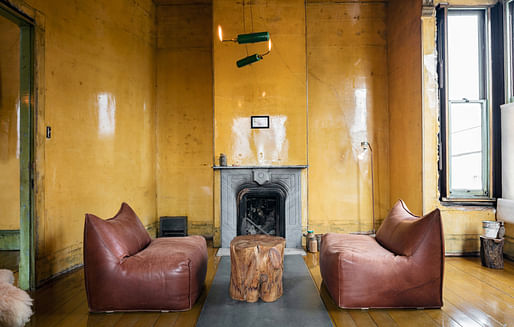

Their biggest challenge was securing the house’s foundation....Other work included stabilizing the walls by injecting adhesive between the lath and plaster with a veterinarian’s needle and transforming a small bathroom into an elevator shaft — NYT
Jori Finkel profiles Carlie Wilmans founder of 500 Capp Street Foundation. The foundation was established to stabilize and preserve 500 Capp Street (exterior, interior, site-specific installations) in San Francisco, which was the longtime home and studio of the Conceptual artist David Ireland (1930-2009).
On a related note, check out the discussion regarding Experimental preservation and architectural authorship with Jorge Otero-Pailos, from Archinect Sessions #47
3 Comments
Does the torch chandelier comply with building codes?
I can not imagine an open flame that isn't within a protected enclosure of some kind is remotely legal or compliant.
Really interesting. I love that they're trying not to preserve it in one random moment jointly decided upon, as a memorial, but to keep it changing and "alive". This is such a concern of mine with house museums - my own relationship with Saarinen's Miller House being critical to this point of view - that they die as soon as they're preserved. A house is the most intimate space that crosses the public/private line in what should be totally unprescribed ways. Keeping it "living" is the only way to understand it as a home.
^ Don't you think it would be a better direction to use psychology to try and create a humane and empathetic environment than it would be to make a Skinner Box.
A guess on my part, but I think your project will elicit superstitious behavior.
Block this user
Are you sure you want to block this user and hide all related comments throughout the site?
Archinect
This is your first comment on Archinect. Your comment will be visible once approved.